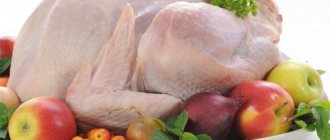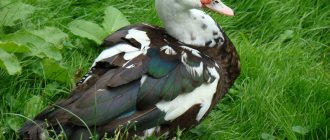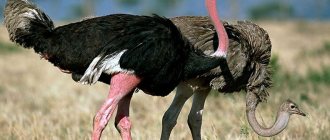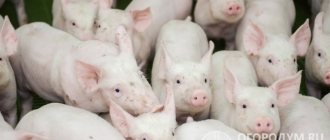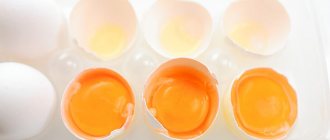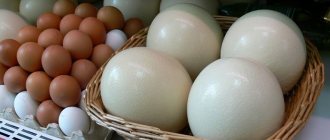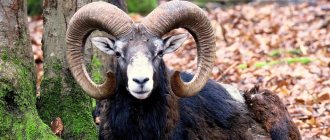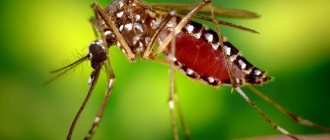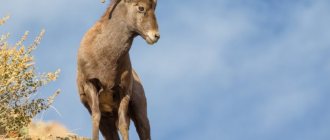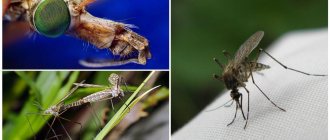Livestock » Sheep
0
5795
Article rating
Kira Stoletova
Depending on the purpose and direction of the breed, the indicator of how much a ram weighs ranges from 25 to 180 kg. The weight of the animal is also influenced by the sex of the animal: males significantly exceed females in weight.
Ram
How much does it weigh depending on the breed?
Woolen
Animals are bred for wool and sheepskins. There are coarse-wool (Romanov variety), semi-fine-fleece and fine-fleece (the length of the hairs on the fleece reaches 30 cm) directions.
The live weight of rams of these species is usually small. For example, the famous Romanovka weighs only 45-50 kg. But there are large breeds: Caucasian, Lincoln (the weight of an adult male is more than 150 kg). Animals are distinguished by their unpretentiousness and good fertility.
Fine-fleece
These sheep are used to produce high quality wool, and up to 12 kg of raw material can be sheared from one individual. The main breeds of the direction: Altai; Stavropol; merino; Caucasian
The average weight of a fine-wool lamb is 70-80 kg.
Semi-fine fleece
The direction is also called meat and wool. Animals gain live weight at a good rate, while their wool is also of high quality and can be used to produce warm and beautiful products.
There are many breeds: Romney March; Kuibyshevskaya; Tien Shan; North Caucasian. The average weight of a sheep is 90-100 kg, and the meat has good taste characteristics.
Sheep are significantly inferior, their weight is 50-58 kg.
Meat
Texel
Sheep are bred for meat. Animals grow quickly and are able to reach slaughter weight in 5-7 months using pasture.
Varieties common in our country: Kuibyshevskaya (male weight is about a hundredweight), Gorky (up to 130 kg), Dorper (early ripening breed weighing 140 kg), Texel (up to 130 kg).
Meat-fat, or fat tail
These animals are popular in Central Asia; they feel uncomfortable in cold and damp climates. Representatives of the breed are characterized by the deposition of fat in the fat tail, a kind of “bag” located under the tail.
Sometimes the fat tail's weight reaches 25 kg. Fat tail lard has an exquisite taste. Types: Edelbaevskaya (ram weight up to 160 kg), Gissar (up to 190 kg), Kalmyk (weight 120-130 kg).
Dairy varieties of sheep, whose milk is used to make cheese, are rare in our country. A prominent representative of dairy sheep is the East Friesian breed.
Animals are capable of producing up to 700 liters of fatty (over 6%) milk per season, and the live weight of rams reaches 100 kg.
It should be noted that wool can also be cut from meat animals, and sheep of woolly breeds can be used for meat.
Dwarf
The representative of the direction is the Wessent breed, the average weight does not exceed 20 kg. These kids eat almost any food, have a peaceful disposition, and for their amazing ability to bring lawns into perfect order, they have received the nickname “ecological lawnmowers.”
Kinds
"Gissarskaya"
Representatives of this species are considered the largest in the world. The breed was obtained in Tajikistan, where local residents crossed the species living there with each other. The main features of these animals are:
- the size of the male is 90 cm at the withers, the female is 85 cm;
- the weight of a mature ram is 185 kilograms, that of a ewe is slightly less than 130 kilograms;
- the skeleton is strong;
- large skull;
- polled, ewes may have small horns.
Sheep of this species are characterized by early maturity. Up to three months of age, lambs gain 0.5 kilograms of weight daily, which is explained by the milk production of females. Animals are distinguished by their endurance, unpretentiousness, good immunity, and undemanding location and living conditions. They can travel long distances (up to 500 km), but cannot tolerate long migrations. Sheep of this breed have low quality wool, but this is compensated by a large amount of meat, fat tail and milk. In this regard, the Gissar sheep is often crossed with other species to improve the meat qualities and precocity of the latter.
As for food, they are very fond of grass, various plants and water. If animals are kept in a pen, then in the summer it is enough to provide them with cut greens and clean liquid. Sheep on pasture are able to forage for their own food, even in areas with insufficient vegetation. In winter, animals eat cereals, root vegetables, hay and licks with minerals.
"Kalmytskaya"
In terms of weight characteristics and size, representatives of this breed are slightly inferior to the Gissar. Their distinctive features are their tall stature and large head with drooping ears. The front and rear legs are large and straight. The fat tail size is smaller than that of the previous breed of sheep. Sheep do not have horns; only a small percentage of rams have small horns.
Representatives of this breed are valued for their productivity and unpretentiousness. Their meat has high nutritional and taste qualities. The weight of a male of this breed reaches 150 kilograms, a female – 80–90 kilograms.
An unusual feature of this species is that during grazing they do not move in herds or groups, but are dispersed throughout the territory
This is very important for farmers, since this way the condition of agricultural land is not disturbed
"Edilbaevskaya"
This breed is 200 years old. Its homeland is the Kazakh steppes. Its ancestors are fat-tailed sheep, which were brought to this region from Astrakhan.
Distinctive characteristics of representatives of this breed are:
- animals are distinguished by a strong skeleton and tall stature, the height of the animal is up to 90 cm;
- the body weight of representatives of this breed is much less than that of the previous two;
- no horns.
Sheep of this breed are bred to produce meat products. A herd of such sheep can provide their breeders not only with meat, but also with wool. Every year, the size of the cut hair from one individual is 5 kilograms. Wool is dense and is mainly used for carpet production. These sheep give birth 3 times in two years, 1–2 cubs each. They grow very quickly on mother's milk. At three months of age they can be slaughtered.
During one lactation period it is possible to obtain more than 155 liters. This milk is used to make cheese, as well as curd and fermented milk products.
Thus, it is believed that the largest sheep are “Gissar”, “Kalmyk”, “Edilbayevsky”. They belong to the meat breeds and have a fat tail, the fat of which is used in the culinary field and as a preservative.
The differences between the Edilbaev breed and the Gissar breed are described in the following video.
Factors influencing live weight
The following factors influence a lamb’s net weight and the rate at which it gains:
- Direction and breed. Only meat rams are distinguished by their large size and produce a high meat yield, while dwarf breeds weigh only about 20 kilograms, which is the average ram weight for such individuals.
- Gender of the animal. In all breeds, the average weight of a male significantly exceeds the weight of a sheep.
- Age. Maximum condition is achieved at the age of 3-4 years. On average, a 4-month-old lamb does not weigh more than 35 kg, even if it is ready for slaughter.
- Feeding and care also affect the live weight of a domestic sheep. Sheep nutrition is usually not a problem for farmers, but feed and vitamins are necessary for good sheep condition.
Contraindications and harm
The use of lamb fat is contraindicated in the following cases:
- tendency to be overweight, overweight, obesity;
- high blood cholesterol, atherosclerosis, heart and vascular diseases;
- gastritis;
- stomach and intestinal ulcers;
- colitis;
- liver diseases accompanied by stagnation of bile;
- skin prone to allergies.
Lamb fat should be used with caution during breastfeeding. Indigestion and colic in infants are explained by the negative influence of the product. Fat can be added to baby food from nine months
If a child develops diarrhea, nausea, or apathy, it should be removed from the diet. Also, you should not apply compresses to infants - sensitive skin may cause irritation and allergies.
Fat can be introduced into baby food from nine months. If a child develops diarrhea, nausea, or apathy, it should be removed from the diet. Also, you should not apply compresses to infants - irritation and allergies may occur on sensitive skin.
Lamb weight after cutting
The above values apply to live animals.
After slaughter, minus the weight of the skin, head, legs and entrails, the carcass loses more than half its weight. The average meat yield per sheep is 48%.
The slaughter yield of lamb varies among different breeds; it is higher among meat varieties. For example, when slaughtering a Romanov lamb with a live weight of 42 kg, a carcass of 14 kg is obtained.
The slaughter yield was 45%. For a Gissar sheep, an individual weighing 50 kg will produce a carcass of 27 kg, with a slaughter yield of 54%.
Slaughter weight of sheep and rams
The concept of slaughter weight includes the mass of meat on the bones and fat deposits, both internal and fat tail. Weight is determined by pre-slaughter weighing of the sheep and subsequent weighing of the meat.
Sometimes the weight of an animal is determined using measurements with a special tape or using a table. But in this case the error may be several kg.
The slaughter yield within the same breed of sheep can vary depending on the sex, age and fatness of the animal.
Thus, breeding animals culled by age are inferior in quantity of meat and carcass quality to young, fattened animals.
An important indicator of the quality of a carcass is the ratio of the amount of pulp and bones. In other words, how much of the skeleton is covered with meat. For young animals this ratio is the most favorable.
Advice! You can distinguish young lamb from the meat of an old animal by the color of the fat. Young lard is white, while old lard has a yellowish tint.
The weight of females is significantly lower than that of rams - up to 40%. For example, an adult lamb of the Kuibyshev variety weighs 100 kg, and a sheep only 60 kg. Based on this, they prefer to select males for meat fattening. The eggs go to repair the herd.
Sheep fat deposits (lamb fat)
Fat on a sheep carcass can be:
- internal - it is deposited on the kidneys, stomach, intestines (it is also called the “omentum”);
- subcutaneous - it forms a “watering” of the entire surface of the meat under the skin layer;
- intermuscular - it is deposited in the layers between individual muscle groups.
The total amount of fat is distributed throughout the carcass depending on the specialization of the breed. In wool animals, it is deposited on the internal organs.
In meat, fat is evenly distributed between the muscles, giving the meat juiciness and tenderness when cooked.
Experts consider the ideal fat content in a lamb carcass to be about 25%, of which half is subcutaneous fat and at least 9% intermuscular.
Yield of sheep by-products
Offal refers to the edible parts of the sheep's innards and head. These are: heart, liver, kidneys, tongue, brains - category 1; scar, spleen, lungs, trachea – category 2. The overall carcass yield of this product is about 9%.
Weighing methods
Breeding rams (sheep) involves individual assessment of their productive and breeding characteristics on a regular basis. As part of the assessment manipulations, the animal’s compliance with a set of established traits is monitored, which includes monitoring weight gain.
Control of the weight parameters of a ram is one of the main points that make up the list of rules for their breeding. Tracking growth progress is necessary to determine the cost-effectiveness of maintenance. Analysis of the weight gain graph allows you to find out the ratio of costs associated with feeding, ensuring proper living conditions and material profit, which includes covering the corresponding costs.
To determine the weight of a ram, certain equipment or a special calculation formula can be used to find the approximate value of this indicator. The second option is among the most preferred for mid-level farmers. This is due to the absence of the need to purchase expensive weighing equipment, incur costs associated with its installation and configuration, and other related factors.
The main measurement parameter is the size of the animal's chest circumference. Measurements are taken behind the front legs and shoulder blades. The tension of the measuring tape is of great importance, since hair can interfere with the accuracy of the measurement.
The obtained value is used as one of the variables in the formula for calculating the live weight of the ram. There are many such formulas, which increases the spread of calculation accuracy and reduces the efficiency of measurement manipulations. Given this, most farmers use a special measuring tape. It contains metric parameters and weight values corresponding to these parameters. The numbers indicating the mass of the animal can be supplemented with several values corresponding to the weight characteristics of different breeds of sheep. The belonging of a particular numerical name to a suitable numerical column is indicated by the corresponding color.
What affects weight?
In addition to whether a sheep belongs to a certain breed, the rate of weight gain and its amount are influenced by the gender of the animal, its age, feeding and housing conditions.
It is customary to keep sheep on pasture for most of the year. On rich grass stands, animals develop quickly. If camps are organized with the possibility of feeding with grain, then the highest quality carcasses are obtained from the sheep.
During the stall period, sheep are driven into sheds - covered pens protected from the wind.
The animals' diet includes meadow or bean hay, concentrates (barley, oats), and salt is required in the feeders. Nursing queens are fed vegetables - carrots, beets, pumpkin.
Areas of sheep farming
When breeding Romanov sheep as a business, it is effective to develop several areas of activity at once:
- sell sheepskin;
- mezhinu (skin with wool);
- skin;
- meat;
- milk;
- breeding young animals.
Fleece
Includes awn and down. Transitional hair (thick, without curls) may also be present. Its presence deteriorates the quality of raw materials. Sheep are sheared 3 times a year (in March, June and October). Wool yield: for rams - 2-4 kg, and for sheep less - 1.5-2 kg. On average - 65-80%.
The following parameters are used to evaluate sheepskin:
- ratio of length of guard hairs to fluff;
- number of guard hairs;
- color of awn and down;
- presence and number of curls;
- purity and balance of the fleece.
Distinctive properties of sheepskin:
- The highest quality sheepskin has a spine to down ratio of 1:4 – 1:10. The optimal content is 1:7. This wool acquires a blue tint and better aesthetic characteristics.
- The awn is painted black. The fluff is white. Different ratios of guard and down hairs give different shades of fleece. Optimally dark gray with a blue tint. Unacceptable - reddish tint and too light color.
- The length of the fluff should not exceed 5-6 cm. Otherwise, it will bunch up and become matted.
- With a large amount of spine, the sheepskin becomes rough and does not hold heat well.
The highest quality fleece is obtained after shearing 5-6 month old lambs that have not been sheared before.
Meat from Romanov breed sheep
Romanov sheep are distinguished by good meat gain for the spent feed. At the age of two months, young lambs are castrated. They grow quickly. At six months their weight is already 50 kg: they can be sold live or as slaughter.
If you grow a Romanov sheep up to 11 months, its weight will reach 70-75 kg. The yield of clean meat is 50%.
Milk
After lambing, a nursing ewe produces 1.3-1.5 liters of milk. This is enough to feed 3 lambs. If the female produced less, then the high milk productivity of the Romanov sheep can be used for the benefit of business.
One individual produces 100-300 kg of milk per 100 days of lactation. The udder of these sheep is well developed and convenient for milking. The content of fats and proteins in sheep's milk is twice as high as in cow's milk. Therefore, much more dairy products can be prepared.
Sale of breeding young animals
At 3.5-4 months, females become sexually mature. But the first mating is recommended when the animal’s weight reaches 38-40 kg. When lambing time approaches, the ewe bleats loudly and often lies down.
A few days before lambing, the hair between the hind legs needs to be trimmed. Childbirth, as a rule, occurs without complications - and no assistance is needed. It happens that the lamb walks forward with its hind legs. Then you need to return it back with clean hands and try to turn the head over.
After lambing, the ewe and lambs are sent to a separate stall. They stay there for up to 2 months. If more than 3 lambs are born, the animal itself cannot cope with feeding. Part of the litter will have to be artificially fed.
Two-month-old lambs are moved to a separate pen - they will be sold.
The implementation of a business idea for breeding Romanov sheep will not require much investment. And the profitability is quite high. This breed is profitable!
At what speed do they pick up?
Young animals have the highest rates of live weight gain. Depending on the grass stand on the pasture, fertilizing and species affiliation, the daily gain is 300-500 grams.
The limit of 600 g is exceeded every day by the champions in the fastest growth - texels and dorpers: these animals can be called “broilers” of the mutton family.
Average weight of a yearling ram
By the age of one year, the growth of the animal stops, the ram reaches the mass of an adult individual of its species. On average, a meat ram at the age of 12 months weighs 90-100 kg.
If the animal is intended to be fattened for meat, it is not advisable to keep it further. As a rule, younger individuals are slaughtered - at the age of 7-10 months. Lambs of early maturing breeds can be slaughtered at the age of 4 months, obtaining the most tender lamb.
The most convenient for use is considered to be a carcass of 18-20 kg.
North Caucasian, 60-120 kg
This is a meat-haired breed that was bred in 1944-1960. Sheep of the North Caucasian breed are distinguished by their large growth. They are white in color, but there may be small spots on the ears, legs and nose of a darker color.
The ewes of this breed weigh from 55 to 58 kg, while the weight of rams is from 90 to 100 kg, with a maximum weight of 150 kg. Most often this breed can be found in the North Caucasus, Armenia and Ukraine. Another advantage is its high fertility. 100 queens can produce about 140 lambs.
How to achieve rapid weight gain?
Only healthy and young animals are selected for fattening. Castrating lambs at the age of 4 months will avoid unnecessary fights in the flock.
Castrati have meat that is more tender than that of uncastrated rams, but they also become fat faster.
After weaning the lambs from their mothers, they are transferred to a pasture rich in forbs.
Additionally, salt lick with added minerals is provided for grazing. Feeding sheep with crushed grain in an amount of 200-300 g per head will significantly accelerate weight gain.
How to measure?
Let's look at several ways to find out the weight of a sheep.
Check weighing
The exact weight of the sheep must be known before vaccination. For this purpose, platform scales installed in a special pen are most often used.
It is important to remember these rules: Acceptable accuracy: for adults - up to 1 kg, for lambs - up to 0.5 kg.
Weight is determined in the morning, before the first feeding of the animals. The results are recorded. This method is considered the most accurate.
Calculation based on measurements (without scales)
Sometimes there are situations when you have to determine the body weight of a sheep or lamb in the field, without equipment.
In this case, the method of calculation by measurements will come to the rescue, allowing you to determine the weight not as accurately as scales, but still acceptable, with an error of no more than 5-10%. And this is enough to cull animals and determine the effectiveness of feeding.
It goes like this:
- Measure the circumference of your chest behind your shoulder blades (A).
- Measure the length from withers to tail (B). Each result obtained is measured in centimeters.
- Next, use the formula: AxBx2.5/100.
The resulting result is the live mass.
Meat yield at slaughter
The body weight of rams of different productivity groups can thus be quite large. The net weight of meat at the exit after slaughter for these animals, of course, is less than the weight of the carcass.
Before slaughter, sheep are first weighed and then sent to special pens, where they are left without food and water for 24 hours. During the period of fasting, the animals empty their bladder and intestines. As a result, their weight is reduced by 2.5-3.5%.
After slaughter, the sheep are skinned, the head and hooves are removed, and gutted. The slaughter yield by weight for rams can be 35-60%. At the same time, the meat itself accounts for 64-70% of the net weight of the carcass, kidneys - 1.4-1.6%, bones - 25-30%, tendons and cartilage - 1.6-2.4%. Losses during storage and cutting may be 1.1%.
Thus, the advantages of sheep, among other things, include a fairly large yield of meat. The average weight of a ram, as we found out, is 100-110 kg. Consequently, 35-50 kg of meat can be obtained from each such animal.
Polled sheep are rarely bred on farms. In most cases, the males of these animals have large horns. The average weight of a sheep after cutting is 50 kg. The weight of the horns of these animals often reaches as much as 20 kg. That is, only 2 times less.
In just one day, an adult sheep can eat up to 10 kg of feed. Farmers try to choose pastures with the most luscious grass for such animals. In order for sheep to gain weight faster, they must be given additional silage, crushed grain, bran, and root vegetables.
Sheep are slaughtered, as already mentioned, usually under the age of one year. The meat of two-year-old sheep is also quite edible. But rams at the age of 3 years are considered, unfortunately, unsuitable for slaughter. By this time, their meat becomes tasteless and very tough.
Records
In the world of sheep, there are several unique breeds and animals that have become real weight record holders.
The heaviest and lightest breeds
Tajik breed of sheep "Joydori".
Tiny sheep, weighing no more than 6 kg, were obtained as a result of breeding work with representatives of the Southdown breed.
Representatives of the meat and fat breed are considered heavy sheep: Gissar sheep reach 85 kg, rams – 160-170 kg; The weight of a fat tail is on average 30 kg, but there are known cases of a 50 kilogram fat bag.
The Tajik and Edilbaev breeds are not far behind: rams weigh about 120 kg, sheep - up to 70 kg.
Argali, 65-180 mm
This mountain sheep lives in Central and Central Asia, and is now in the Red Book. Argali is considered the largest wild sheep, which can weigh from 65 to 180 kg. There are several subspecies, but the largest is the Pamir argali. Argali can be of different colors, from sandy light to grayish-brown. Dark stripes are visible on the sides. They live in open spaces.
